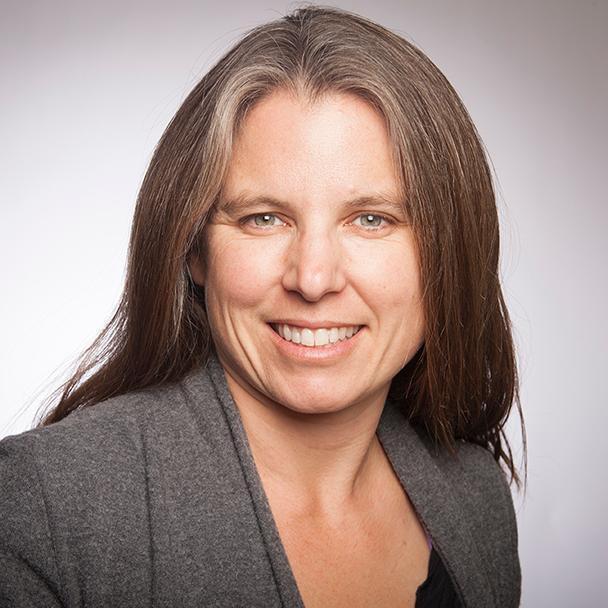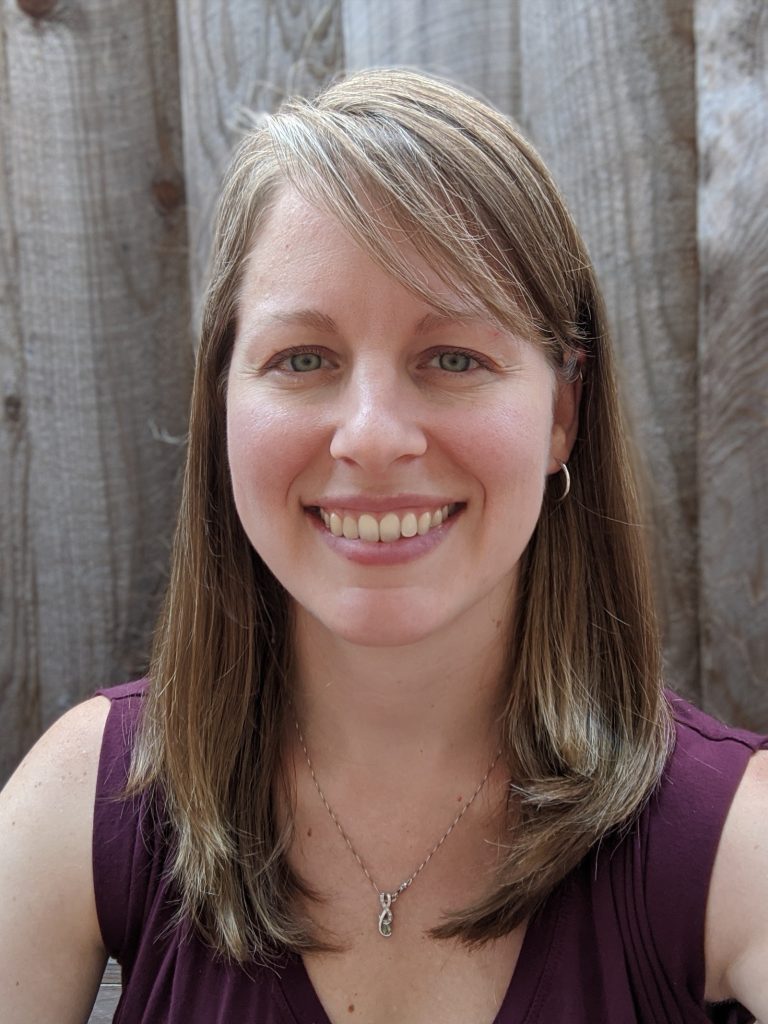Author Profiles and Positionality Statements
Christelle Sabatier

I identify as a White, cisgender, heterosexual woman who is French American. I am also an immigrant to the United States, a first-generation college student, and an English language learner. Some of these identities provided barriers on my path to where I am today, while others come with privileges that lower barriers to access. When I share the country of my birth, I am not met with confusion—in fact, many people are often impressed, assuming that I came from an elite Parisian family rather than the rural, Spanish-French immigrant community that I grew up in. I learned English at the age of 10 and quickly lost my French accent, which means most people don’t know my immigrant background unless I choose to share it with them.
I attended University of California, Berkeley, as an undergraduate, where I graduated with a BA in molecular and cellular biology with an emphasis in biochemistry. As a White woman majoring in biology, no one ever questioned my presence in the classroom or the laboratory. Yet I struggled with my own sense of belonging. I was privileged to be accepted into a program targeted at first-generation students in biology. Through this Biology Scholars Program, I had the opportunity to join a structural biology research laboratory, and my eyes were opened to the possibilities of new careers in biology that I had never even considered. I fell in love with working in a space where I could follow my curiosity and work collaboratively with peers to explore complex questions—and where I was at the forefront of discovery in science.
As a graduate student at University of California, San Francisco, I shifted my focus from protein structures to the development of neurons. I also participated in the Science & Health Education Partnership, where I worked with teachers in the San Francisco Unified School District to develop and facilitate science lessons. Working with middle-school teachers to design classroom activities to promote their students’ curiosity about science is when I fell in love with teaching. After a post-doctoral fellowship at Stanford, I sought out opportunities to practice my fledgling teaching skills. Like in the laboratory, teaching was very much a trial-and-error process, and I am very grateful to the feedback from students along the way and to the educators and scholars that shared their evidence-based practices. I have been teaching Introductory biology, neurobiology, and neuroscience courses for over 20 years as a teaching professor at Santa Clara University. Every new teaching experience is a journey of discovery. Every student approaches biology differently, and I find great pleasure in accompanying them in their journey. This resource was designed with them in mind and cowritten alongside students. My goal is for this book to lower barriers to any student who is curious to explore biology. I hope that they will find this book helpful and that it will spark their curiosity and their motivation to explore this ever-changing field.
Michelle McCully
 I am a heterosexual, cisgender, White woman. As a woman who does computational science, I’ve been in the minority in most classrooms and labs I’ve walked into, but I’ve been fortunate to find myself rarely as the “only” or “first” woman. And now that I’m a biologist, I still find it a little disorienting to be in classrooms that are majority women. I am passionate about introducing quantitative methods and computational thinking, especially to my female students.
I am a heterosexual, cisgender, White woman. As a woman who does computational science, I’ve been in the minority in most classrooms and labs I’ve walked into, but I’ve been fortunate to find myself rarely as the “only” or “first” woman. And now that I’m a biologist, I still find it a little disorienting to be in classrooms that are majority women. I am passionate about introducing quantitative methods and computational thinking, especially to my female students.
While I didn’t grow up poor, my family was certainly on the lower socioeconomic end of the scale for where we lived. My dad worked as a manager in a can factory, and my mom stayed home with my sister and me. I could never have gone to college or gotten a PhD without significant financial assistance. I appreciate the accumulation of “small” costs to university students, like textbooks, and I want to ensure that my students are getting a worthwhile value from the educational materials required in my courses. Given the depth-over-breadth style of teaching in Santa Clara University’s Introductory Biology Experience, it has been especially challenging to find resources that provide sufficient detail on a topic while presenting it at a level appropriate for a lower-division life sciences student. For these reasons, I joined the team working to build an open-access educational resource text for the IBE.
I pursued a BS in biomedical engineering and a minor in computer science from Washington University in St. Louis. During a seminar course in my first semester, I was entranced by a movie of a protein wiggling around. I joined the professor’s research lab and learned how to perform these molecular dynamics simulations to study cytoskeletal proteins, and I continued using simulations to model protein folding in graduate school. I earned my PhD in bioengineering through the Biomolecular Structure and Design Program at the University of Washington, and I subsequently pursued an IRACDA Postdoctoral Fellowship at the University of California, San Francisco. There I was trained in new teaching pedagogies, such as active learning, and I also delved into the experimental side of protein biochemistry research. Since 2016, I have been a professor in the Biology Department at Santa Clara University, a primarily undergraduate Jesuit institution in the Bay Area. SCU is a natural fit with my passions for teaching and conducting experimental and computational research with undergraduate students. I teach upper-division courses on molecular modeling and molecular biology, a non-majors core course on biotechnology, and of course in the Introductory Biology Experience. The McCully Lab studies the balance between function, dynamics, and stability of engineered proteins using a complement of computational and experimental biophysical methods.
Dawn Hart
Coming soon.
Elizabeth Dahlhoff

I am a white, cis-gender female from mixed western European heritage who was born on a dairy farm. My family was poor. We were on public assistance until I was eight, when my dad finished medical school. Like a lot of Biology students, I started out college thinking I was going to go to medical school. For me, it was because by the time I was in high school, my dad was a doctor, and we were more financially stable. I craved that stability.
As an undergraduate, I went to University of California Santa Cruz. I majored in Chemistry (because I liked the math and it was viewed as a great pre-med major) and Biology (because I loved the ocean). I became an avid SCUBA diver. I started doing research in marine biology with some amazing mentors. I also did research in chemistry, and fell in love with how proteins work, and how they function under extreme conditions. I really wanted to be a marine biologist and study proteins, but I just did not think I could get a job where I could make a good living. It took a lot of convincing from my mentors that I should at least give a graduate school application a try, and I did. So instead of being a doctor, I went to graduate school and got a PhD in Marine Biology from Scripps Institution of Oceanography, working on how proteins work in animals that live in really extreme environments- deep sea hydrothermal vents. After that, I just kept going. I did a post-doc in marine ecology. I got married. I had twins. I started a collaboration (with Dr. Nathan Rank) working on animals (beetles) that live at the top of mountains, instead of at the bottom of the ocean (but I still love the ocean).
I joined the SCU faculty 30 years ago, and have taught introductory biology nearly every year I have been here. This is the first time I am actually excited about the book that I assign to my introductory Biology students. I am very sensitive to the costs of college, and how dislocating it feels to be around people with a lot more money than you have. One of the gifts of this project is the fact that it is free to our students- and to all students! I also love the shared nature of the book- anyone can use it, mix it, move it forward. I also love doing research with undergraduates- over 120 students have been members of “Team Beetle” so far. I have this amazing, interesting, wonderful life. One of the things I love about being a professor at a school like Santa Clara is playing a role in the process of our students’ discovery of self, being there at the beginning of the “adult” part of their amazing, interesting, wonderful life.
Media Attributions
- Christelle Sabatier headshot
- McCully headshot © Michelle McCully is licensed under a CC BY-NC (Attribution NonCommercial) license
- my photo 3 2
